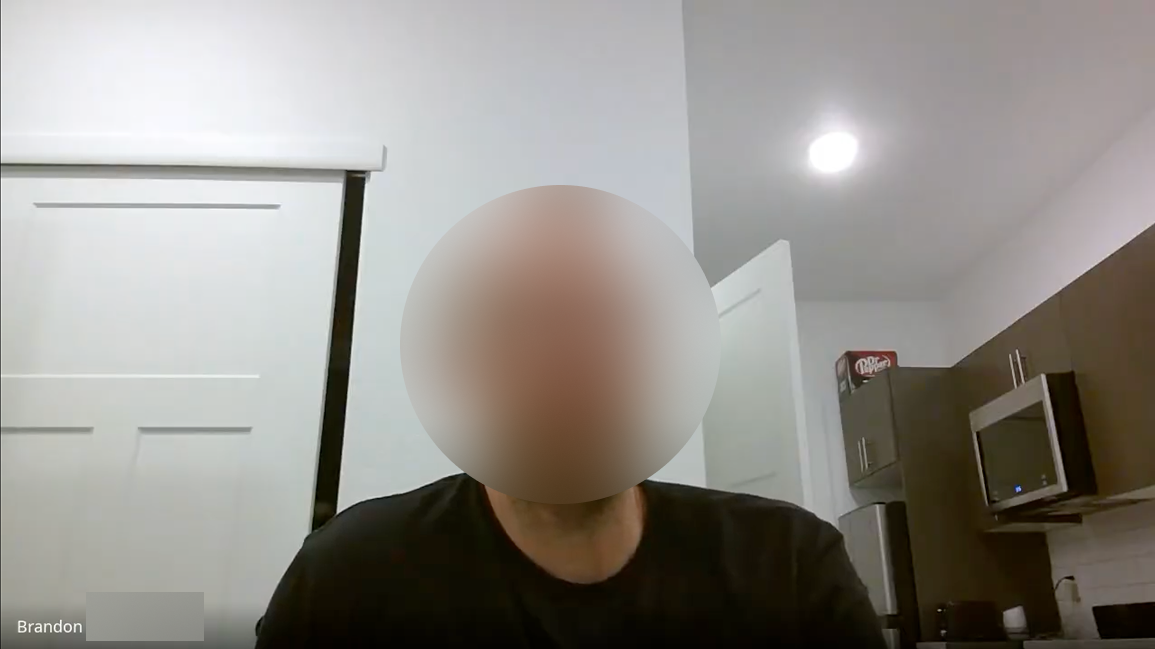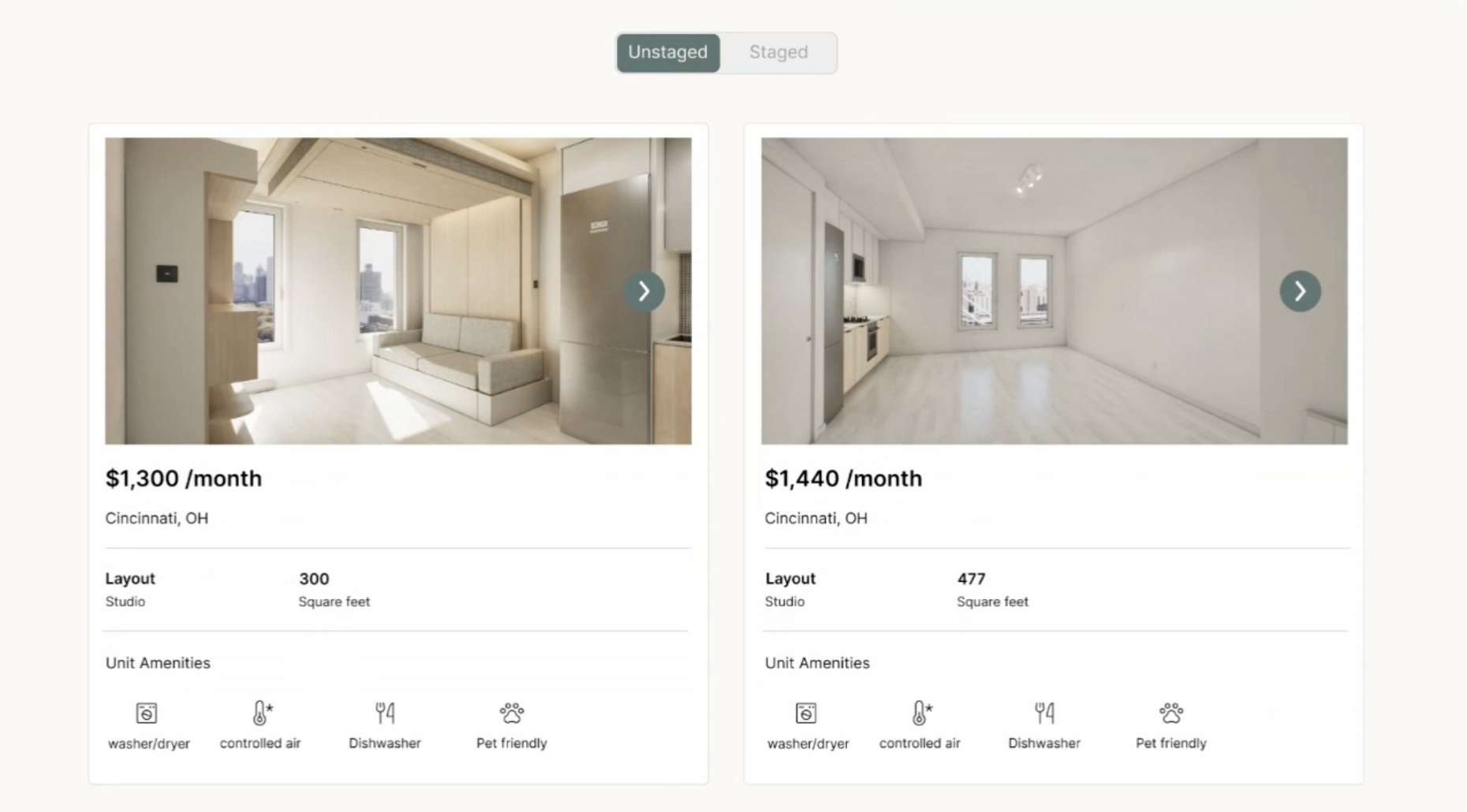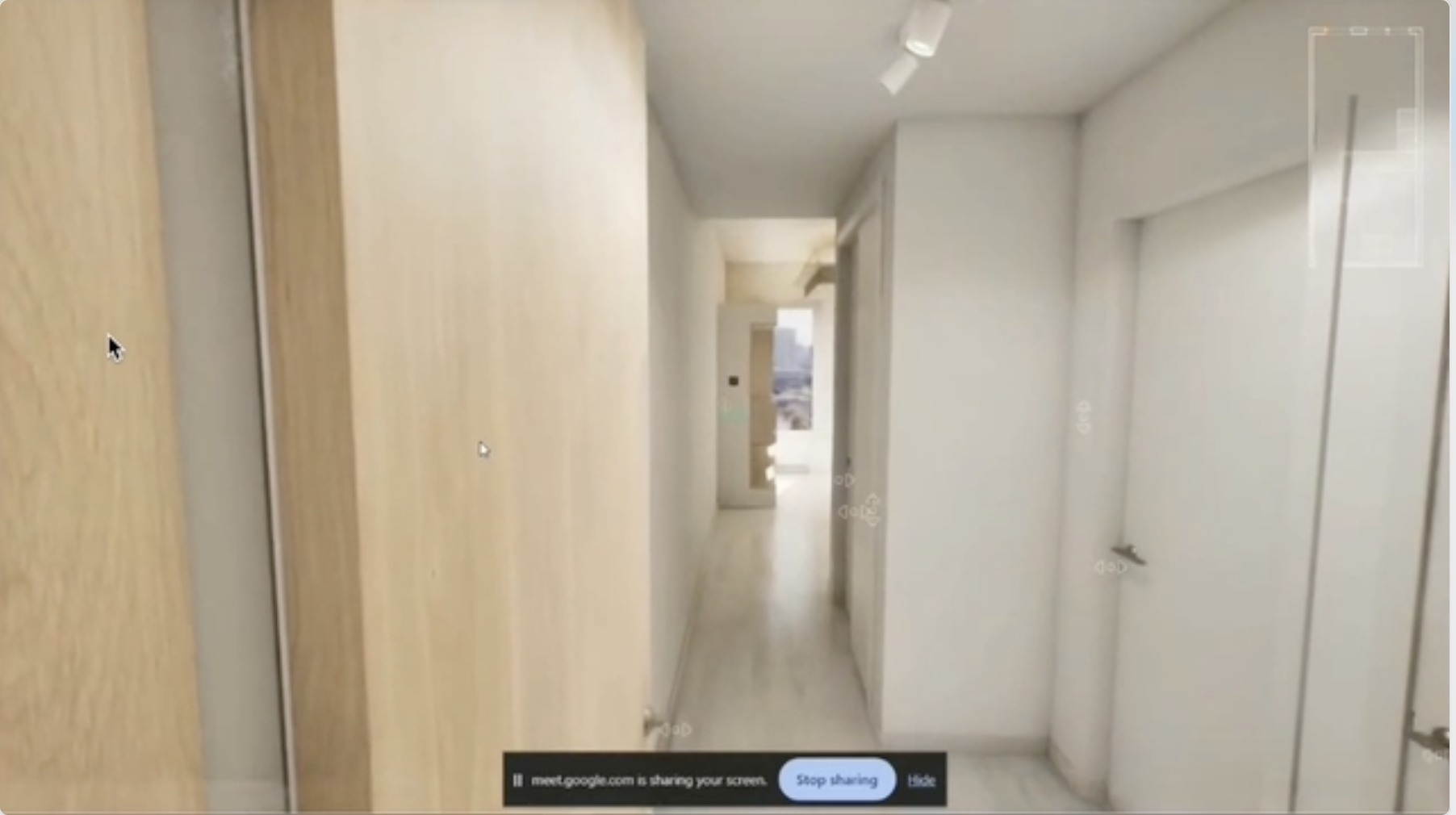4/6
The Trust Factor
Elevating the partnership experience
Strategic research
Product planning
Full-stack execution
100%
Adoption by sales teams
Increase
In lead quality
View Project

To determine cause vs. correlation, I lead the charge on qualitative research, while quantitative methods were distributed to other team members.
The objective was to collect and analyze qualitative data to evaluate the assumptions made by the team prior to conducting the research. Though causation experiments were out of scope, my focus was on trying to establish possible correlations between different variables (semi-furnished, amenities, price, location, apartment size, etc.) to better define the needs of our users.
1️⃣ 1:1 Interviews

2️⃣ Behavioral Data & Experiments:
- A/B Testing on Listings
- Virtual reality apartment tours


- If lowering rent increased signings across all variations, price was a correlation.
- If renters repeatedly talked about amenities, then amenities could be a correlation.
For this study, I leaned on a concept from UX designer Jared Spool, who described how the best usability test moderators balance three personas: the scientist, the flight attendant, and the sportscaster.
I structured the research by defining clear objectives and methodologies:
Target Audience:
1️⃣ Current residents
2️⃣ Non-residents fitting our consumer criteria. For this group I created a screener and recruited twenty participants through userinterviews.com
Methodology:
Remote, moderated, "think out loud" environments. All sessions were video and audio recorded as I guided tasks and questions for two test groups.
1️⃣ Current Residents
- Conducted 1:1 tests/interviews while residents walked through their apartments, sharing their experiences.
2️⃣ Non Residents:
- I built a mid-fidelity apartment listing site for A/B testing.
- Shared virtual walkthrough of apartments (similar to Sims or first-person video games).
* Virtual walkthroughs were designed and built in collaboration with an external design studio and the rest of the team.
Test Environment & Scenarios:
- Developed a structured test outline and script with guided questions and onboarding introductions.
- Created realistic user tasks for participants to carry out
- Defined success metrics and analysis methods.
User testing can be stressful—meeting someone for the first time, being recorded, performing tasks, and answering questions. My role was to ensure participants felt comfortable and safe. I used:
Ice breakers to make the session feel relaxed
Encouragement and reassurance to reduce anxiety
Attentive monitoring to pivot when necessary and support participants through difficult tasks
During testing, I actively facilitated the sessions to:
- Encourage participants to think out loud
- Narrate user actions to help shy participants find their rhythm
- Reel in off-topic discussions when necessary
- Ask probing questions: "Why do you feel that way?" "Would you still choose this option if X were different?"
Knowing the company's internal hurdles, I was able to highlight input about difficult company decisions, ensuring insights were directly applicable to strategic pivots.
By the third test, we had already disproved major company hypotheses. This research:
✅ Quickly revealed insights that challenged initial assumptions.
✅ Identified key pillars that had previously been overlooked.
✅ Provided clear insights into what truly influenced rental decisions—allowing the company to refine its product offering.
The findings became a fundamental catalyst for our playbook, aligning research insights with the startup’s fast-paced timeline, while providing a much needed introspective breath of fresh air.
